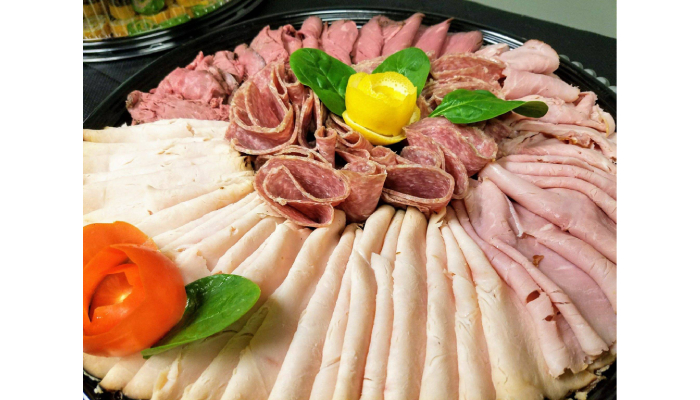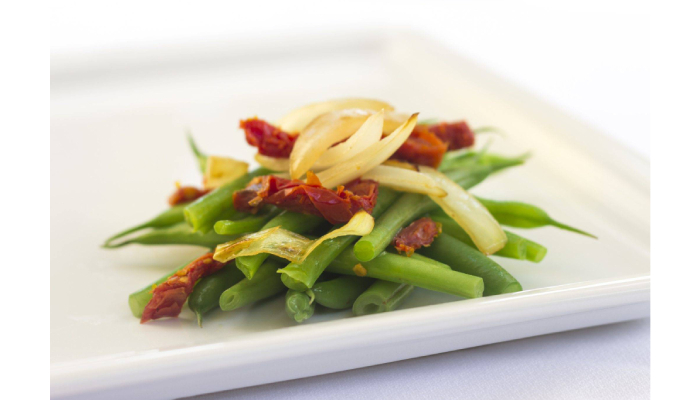How To Tailor Your Corporate Catering Menu To Your Guests?
Corporate events are a critical part of building relationships and showcasing your company’s culture. Whether it’s a team-building event, an annual conference, or a high-level meeting, the food served can play a key role in creating a memorable experience. A well-thought-out corporate catering menu can elevate your event, foster networking, and even contribute to the overall productivity of your guests. However, tailoring the catering menu to suit the preferences, dietary requirements, and expectations of your guests is essential for creating an exceptional experience.
Here’s a guide on how to tailor your corporate catering menu to your guests effectively:
Understand the Type of Event
The first step in curating your corporate catering menu is understanding the nature of your event. The type of event largely influences the type of food you should serve. For instance, a formal business meeting or a gala may call for a more refined menu with plated meals, while a casual office gathering might require finger foods or a buffet-style service. Key event types include:
- Conferences or Seminars: These are typically long, structured events that may require meals at set times. Depending on the schedule, you may opt for breakfast, lunch, and perhaps a dinner buffet with light snacks in between.
- Team Building or Employee Appreciation Events: These informal gatherings often benefit from a more interactive or buffet-style menu that encourages mingling and sharing.
- Client Meetings or Networking Events: The food in these settings should be a bit more refined, as these events are often used for relationship-building. Consider appetizers, plated meals, and high-quality offerings that align with the professionalism of the event.

Consider Dietary Preferences and Restrictions
One of the most important considerations in corporate catering is catering to various dietary preferences and restrictions. Modern events often have a diverse group of attendees with unique dietary needs, so it’s vital to offer a variety of options to accommodate these. These may include:
- Vegetarian and Vegan Options: With the rise of plant-based diets, offering vegetarian or vegan options is a must. Ensure that these options are just as flavorful and satisfying as the meat-based dishes.
- Gluten-Free Choices: For individuals with gluten intolerance or celiac disease, gluten-free options are a necessary part of any corporate catering menu.
- Allergy-Friendly Selections: Food allergies are a significant concern, and some individuals may have life-threatening reactions to allergens such as nuts, dairy, eggs, and seafood. Be sure to include options that cater to these allergies and label all items clearly.
- Halal or Kosher Food: Depending on your audience, offering halal or kosher food can be important for respecting religious dietary requirements. Discuss these needs with your caterer in advance to ensure compliance.
Align with Your Corporate Brand and Culture
Your catering menu should align with your corporate brand and culture. The food you serve reflects your company’s values, and it’s essential to showcase this through the catering choices. Here are some ways to incorporate your corporate identity into the catering:
- Sustainability: If your company values sustainability, opt for locally sourced ingredients, eco-friendly packaging, or sustainable catering practices. Serving organic, seasonal, or farm-to-table options can reinforce your commitment to the environment.
- Luxury and Elegance: If your company caters to high-end clientele, your menu should reflect this sophistication. Offer a selection of gourmet dishes, such as premium meats, fresh seafood, and fine wines, for an upscale experience.
- Cultural Representation: For businesses with international ties, consider incorporating international flavors into your menu to showcase your global presence. This could involve serving Asian, Mediterranean, or South American-inspired dishes that cater to diverse tastes.
Serve a Variety of Food Options
Variety is key to catering success. Offering a broad selection of dishes ensures that there is something for everyone, allowing your guests to sample a variety of foods and find options that best suit their preferences. This includes:
- Appetizers: Small bites, such as canapés, hors d’oeuvres, or sliders, are great for networking events. They encourage mingling and are easy to eat while standing or conversing.
- Main Dishes: Depending on the format of your event, choose a variety of main dishes that cater to different tastes and dietary needs. A mix of meat, poultry, seafood, and vegetarian options can ensure everyone is catered for.
- Sides and Accompaniments: Sides such as salads, roasted vegetables, rice, or bread are excellent complements to the main dishes. Offering a variety of sides ensures that your guests have enough options to create a balanced meal.
- Desserts: A selection of desserts can be a great way to end the meal on a sweet note. Offer a mix of small desserts like cookies, cakes, and fruit platters, ensuring that there are options for guests with dietary restrictions.
- Beverages: Don’t forget about drinks! Offer a variety of beverages, from coffee, tea, and water to soda, juice, and wine. If it’s a more formal event, consider having a signature cocktail that represents your company.
Consider the Serving Style
The way food is presented and served can significantly impact the overall experience. Depending on your event’s style, you can choose from several different catering formats:
- Buffet-Style: This is ideal for larger groups and more casual events. A buffet allows guests to choose what they want and how much they want, ensuring that everyone gets what they prefer. Just be mindful of portion sizes and ensure that the buffet layout allows for easy access.
- Plated Service: For more formal events, plated meals offer a refined experience. This allows you to have greater control over portion sizes and presentation, and it ensures that every guest gets the same meal.
- Food Stations: A more interactive option, food stations allow guests to watch as their food is prepared fresh. This could be anything from sushi-making stations to carving stations with roasted meats.
- Family-Style: This style encourages sharing and is great for fostering a sense of community. Large platters are brought to each table, and guests help themselves, making it more intimate and personable.
Plan for Timing and Logistics
The timing of your catering service is just as important as the food itself. When you choose your catering menu, consider the schedule of your event and ensure that the food is served at appropriate times. For example:
- Morning Events: Breakfast buffets or continental breakfasts with coffee, pastries, and fresh fruit are ideal for early meetings.
- Mid-Day Events: Lunch buffets, sandwich platters, or boxed lunches work well for midday events. Make sure the food is easy to eat and doesn’t disrupt the flow of the event.
- Evening Events: If your event runs into the evening, dinner services should offer substantial, filling meals. Consider a mix of hot and cold dishes, as well as more indulgent options for evening affairs.
It’s also important to coordinate with your catering team to ensure smooth service. The last thing you want is for food to be delayed, or for guests to be waiting for a long time. Planning ahead and having the right team in place ensures that everything runs smoothly.
Get Feedback and Adjust for Future Events
Once your corporate event has concluded, it’s a good idea to gather feedback from your guests about the catering experience. This can help you improve and refine your future catering choices. Ask your guests about:
- The variety and quality of the food.
- Whether dietary preferences were adequately met.
- The overall presentation and service of the meal.
By collecting this information, you can better tailor future menus to meet the expectations and needs of your guests.
Conclusion
Tailoring your corporate catering menu to your guests is an essential part of creating a successful event. By understanding the type of event, accommodating dietary needs, aligning the menu with your corporate brand, offering variety, and choosing the right serving style, you can ensure that your catering leaves a lasting impression. A thoughtfully designed catering experience can foster positive relationships, enhance productivity, and reflect the values of your company, all while making your event unforgettable.




